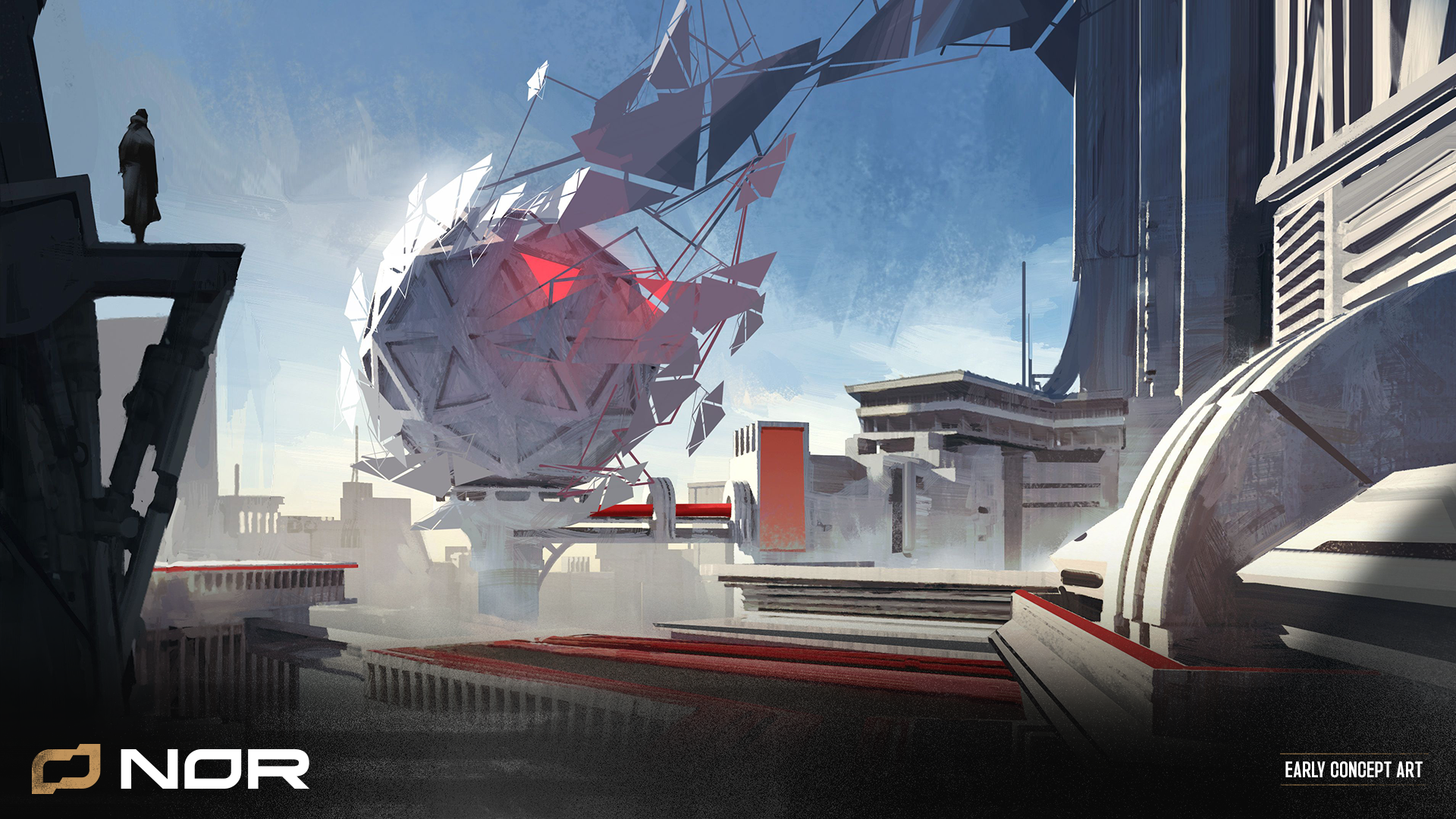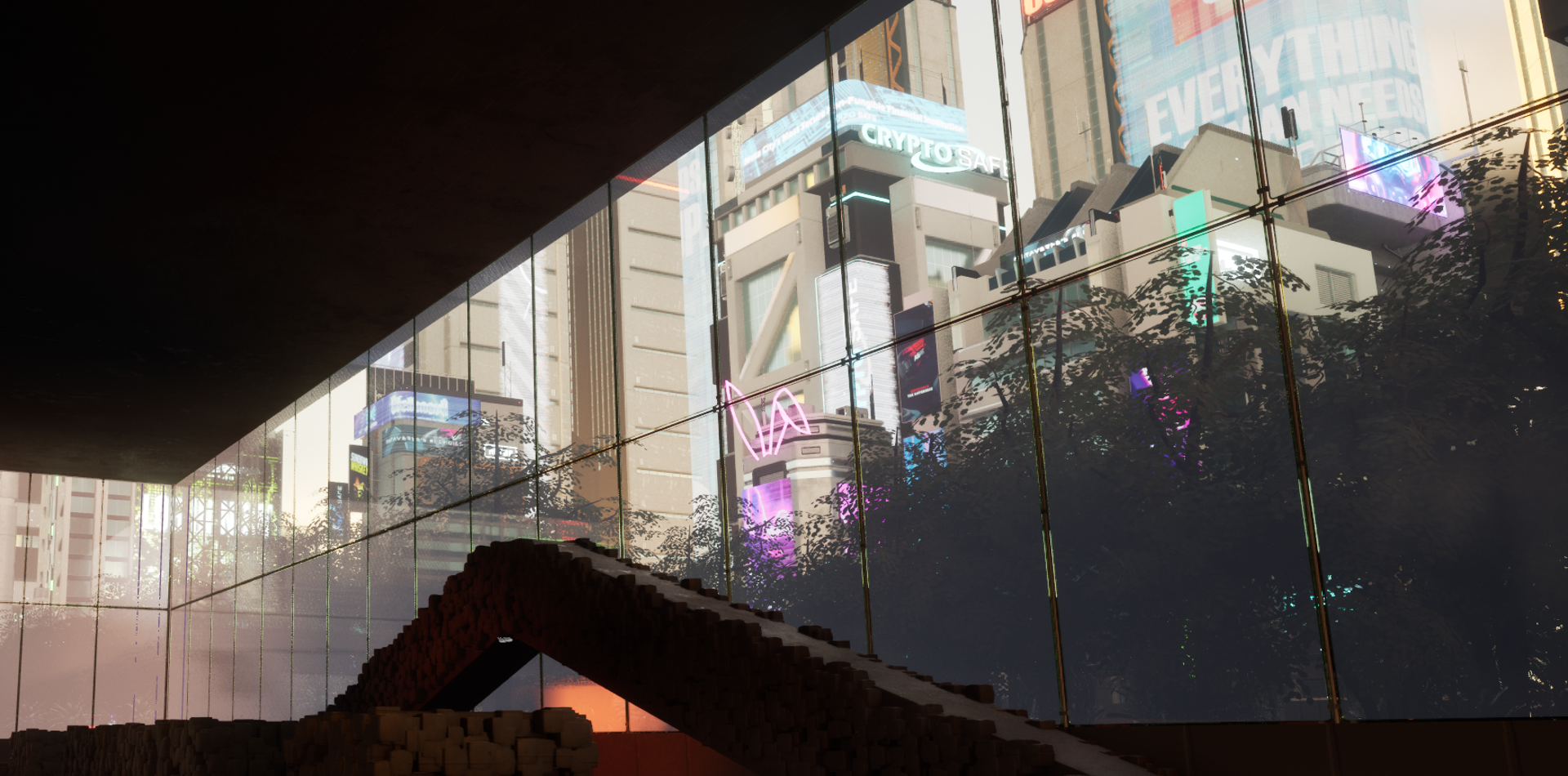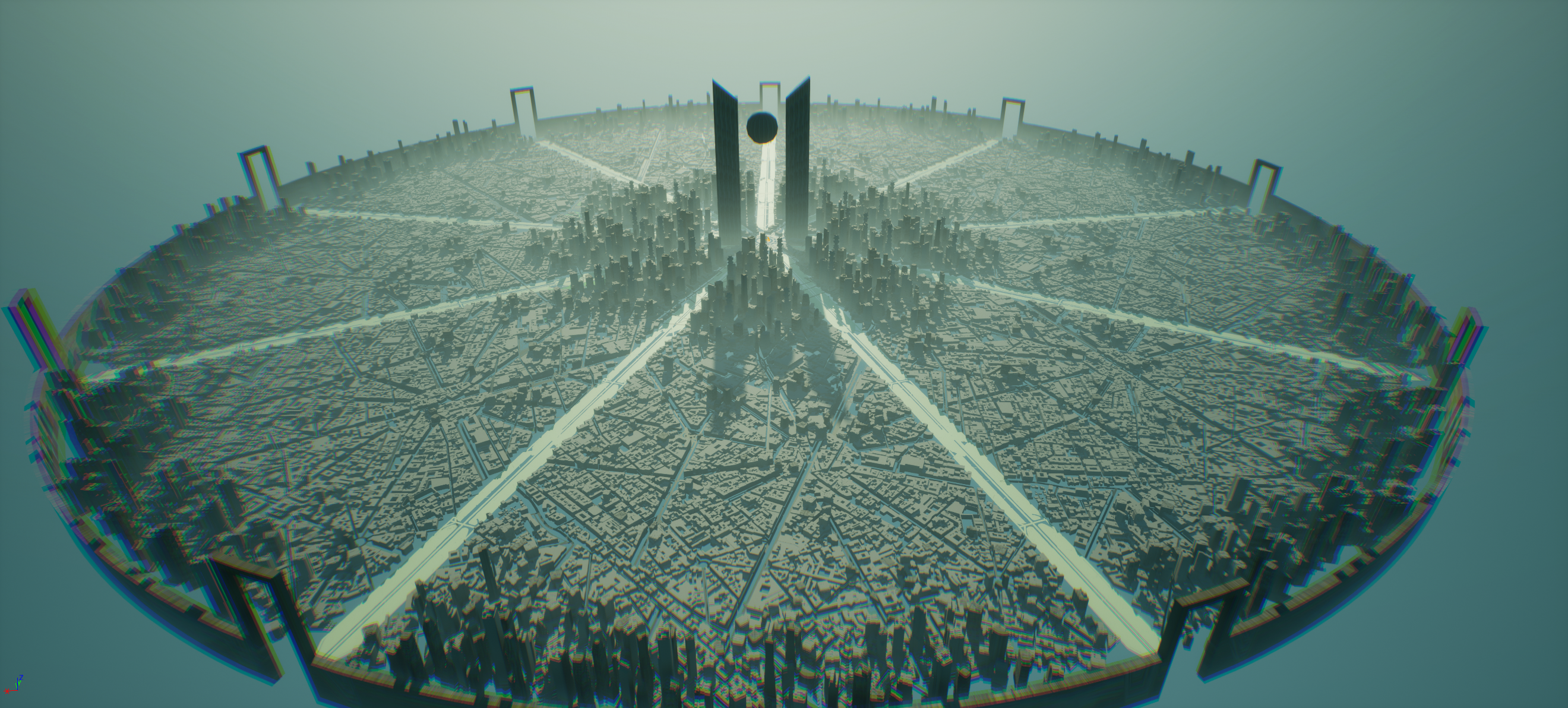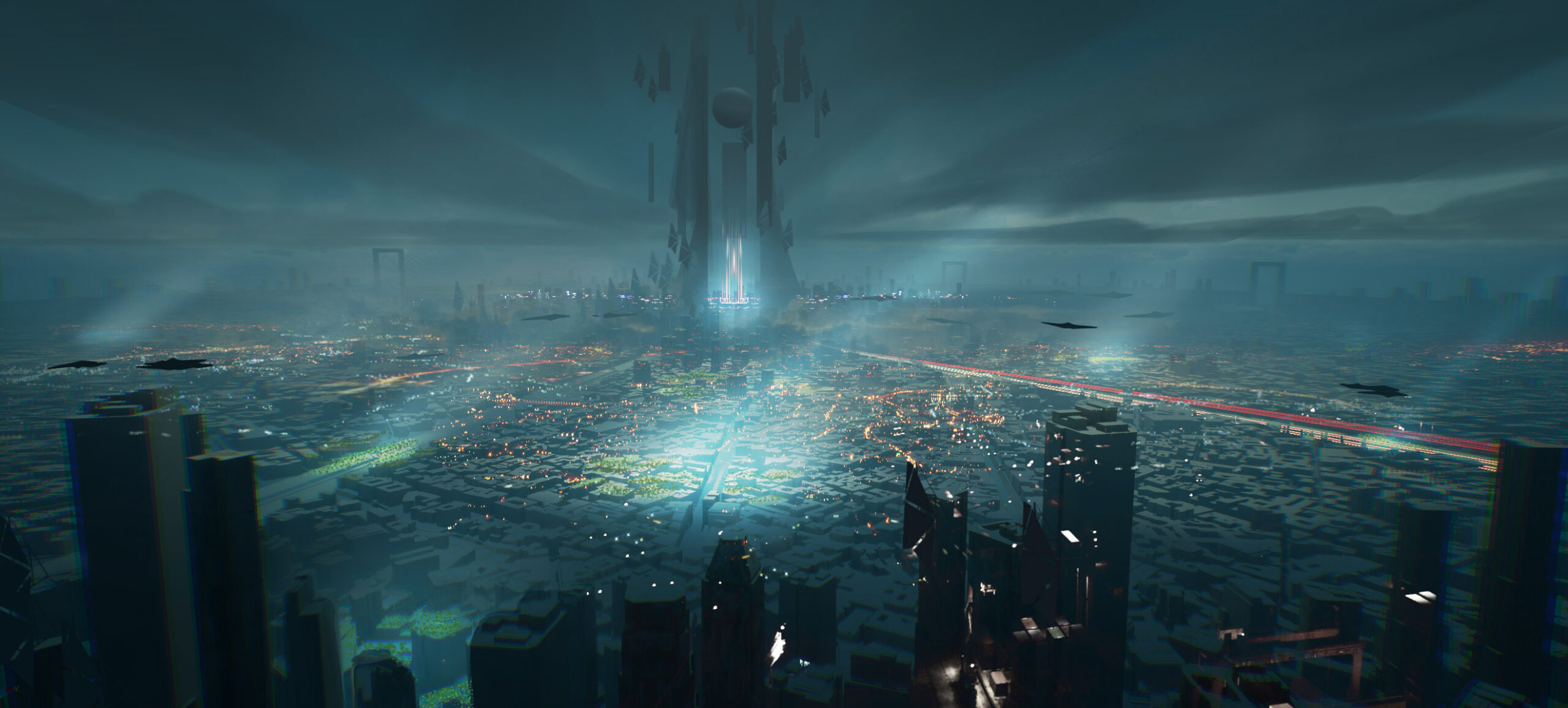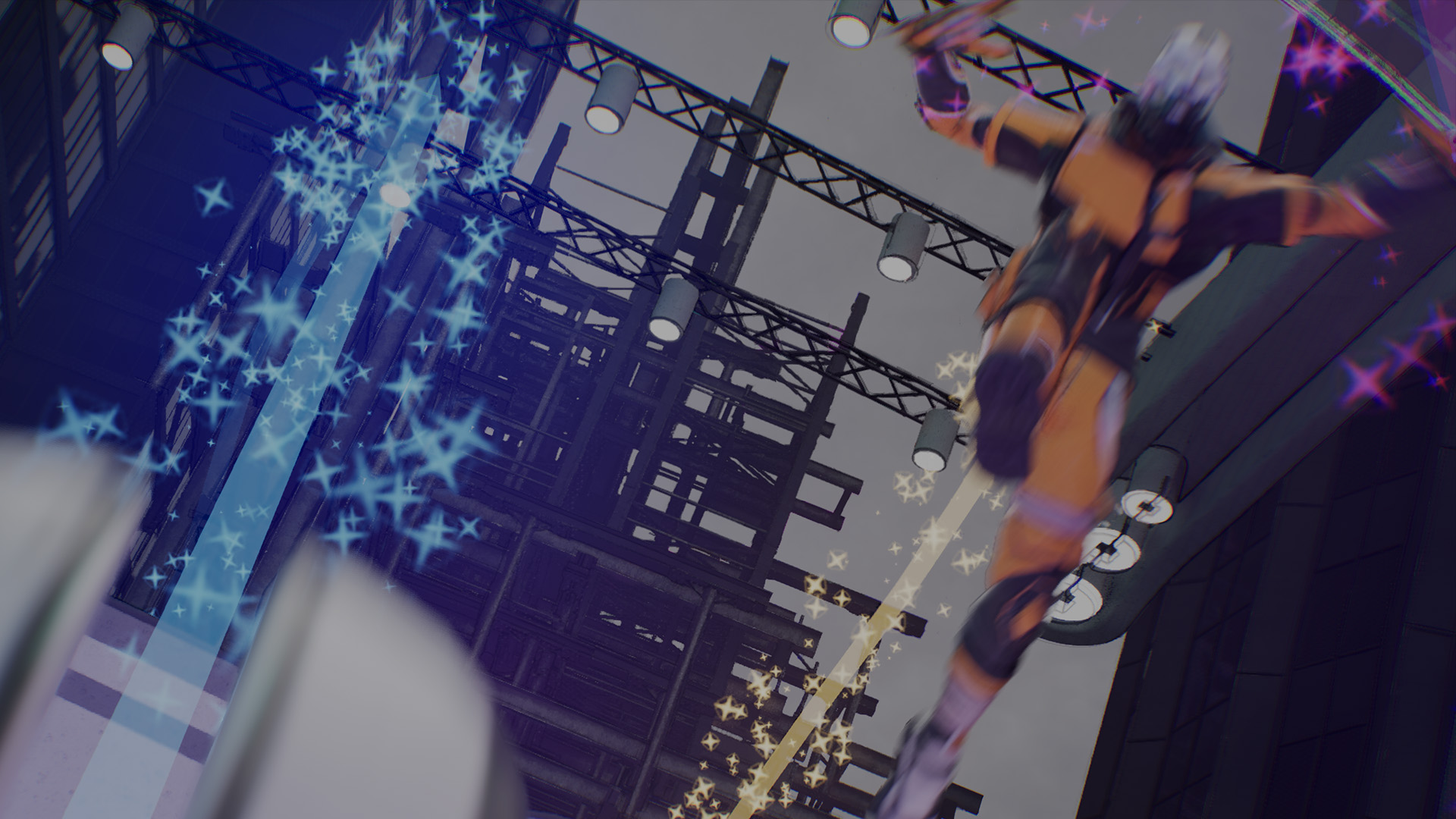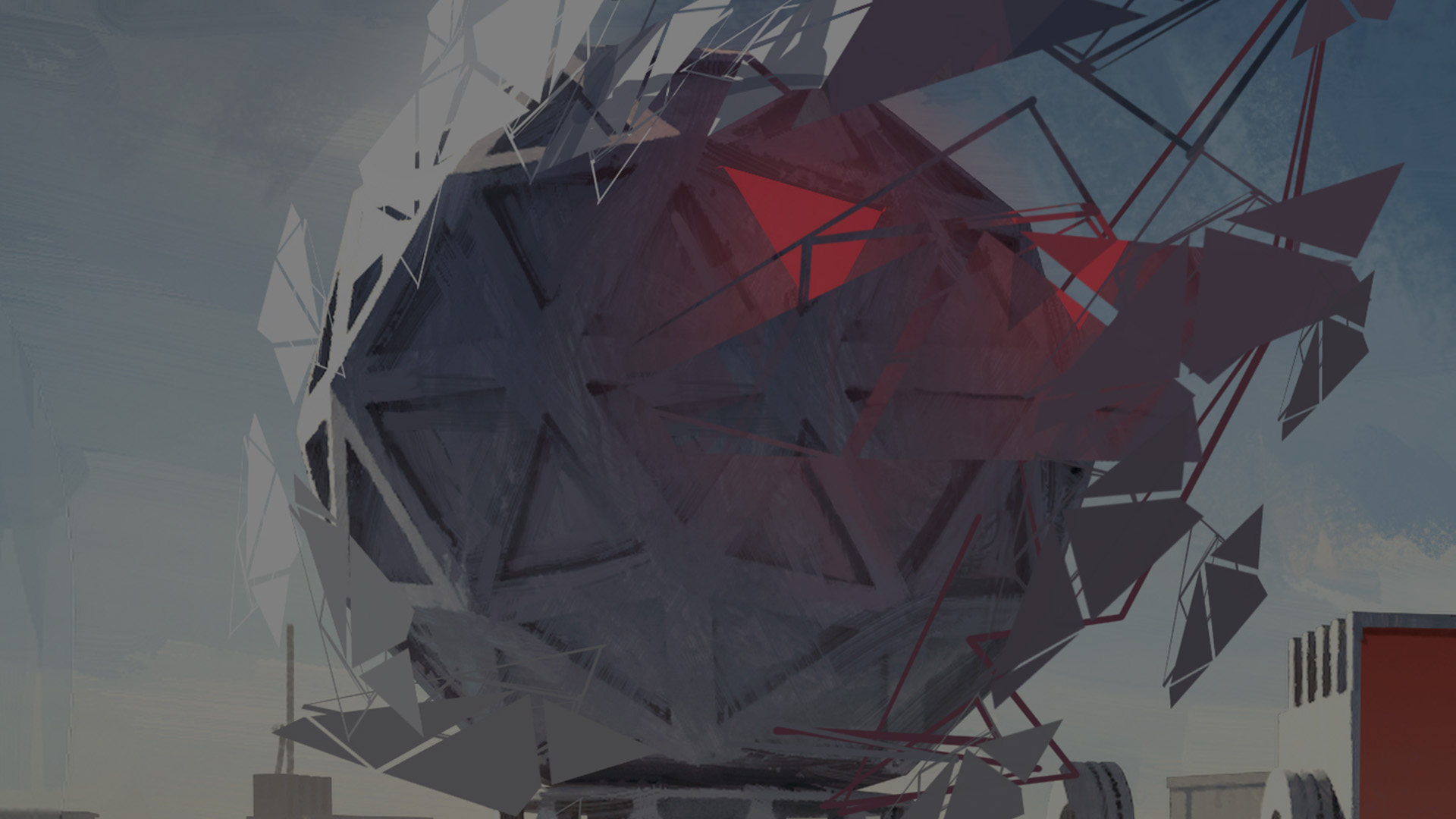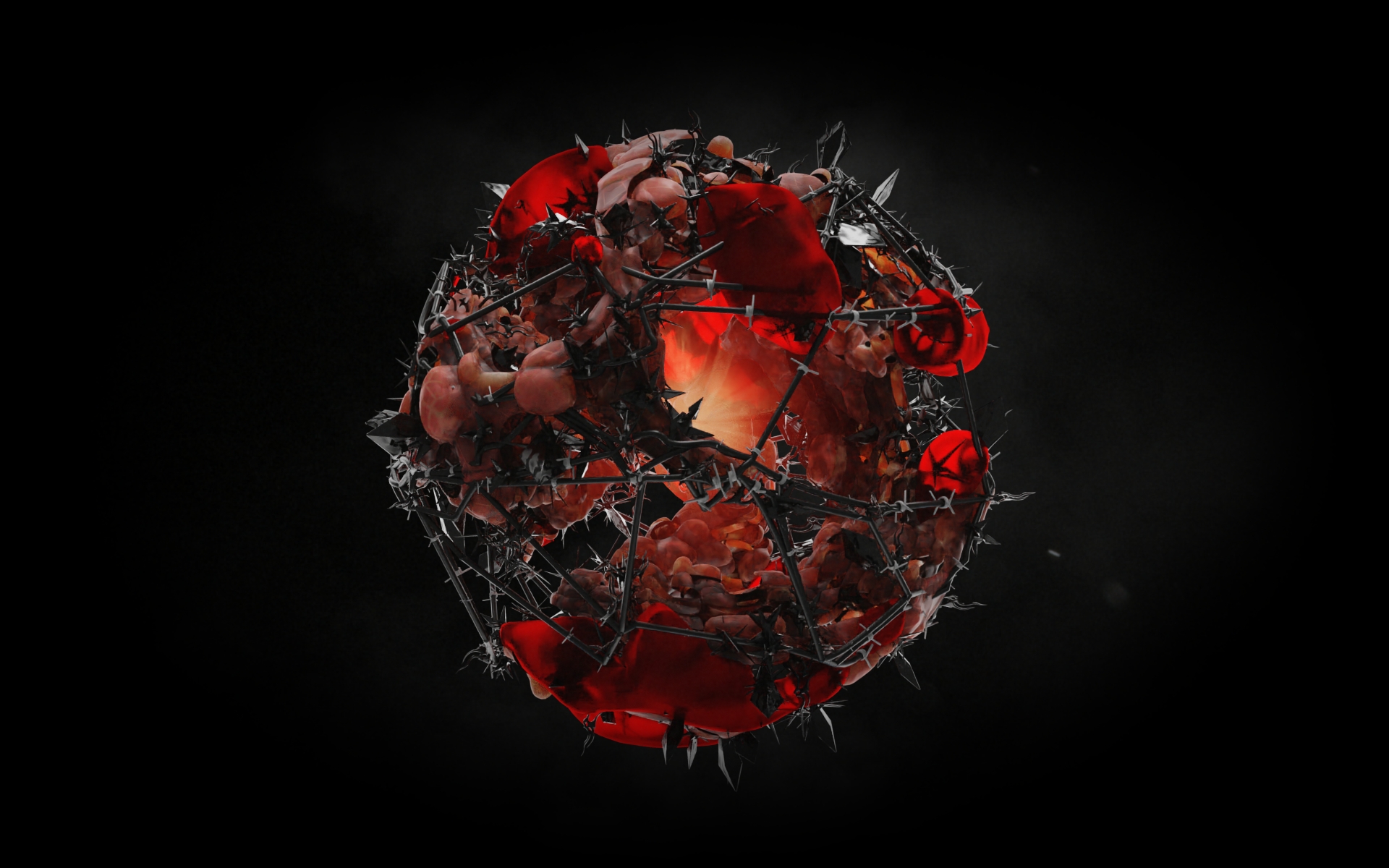THE ARENA PERILOUS
THE ARENA PERILOUS is a massive, mutable colosseum built above the Temple of the Coalescent. One, several, or all of The 9 Progenitors designed the Arena at some point in Khora’s forgotten past.
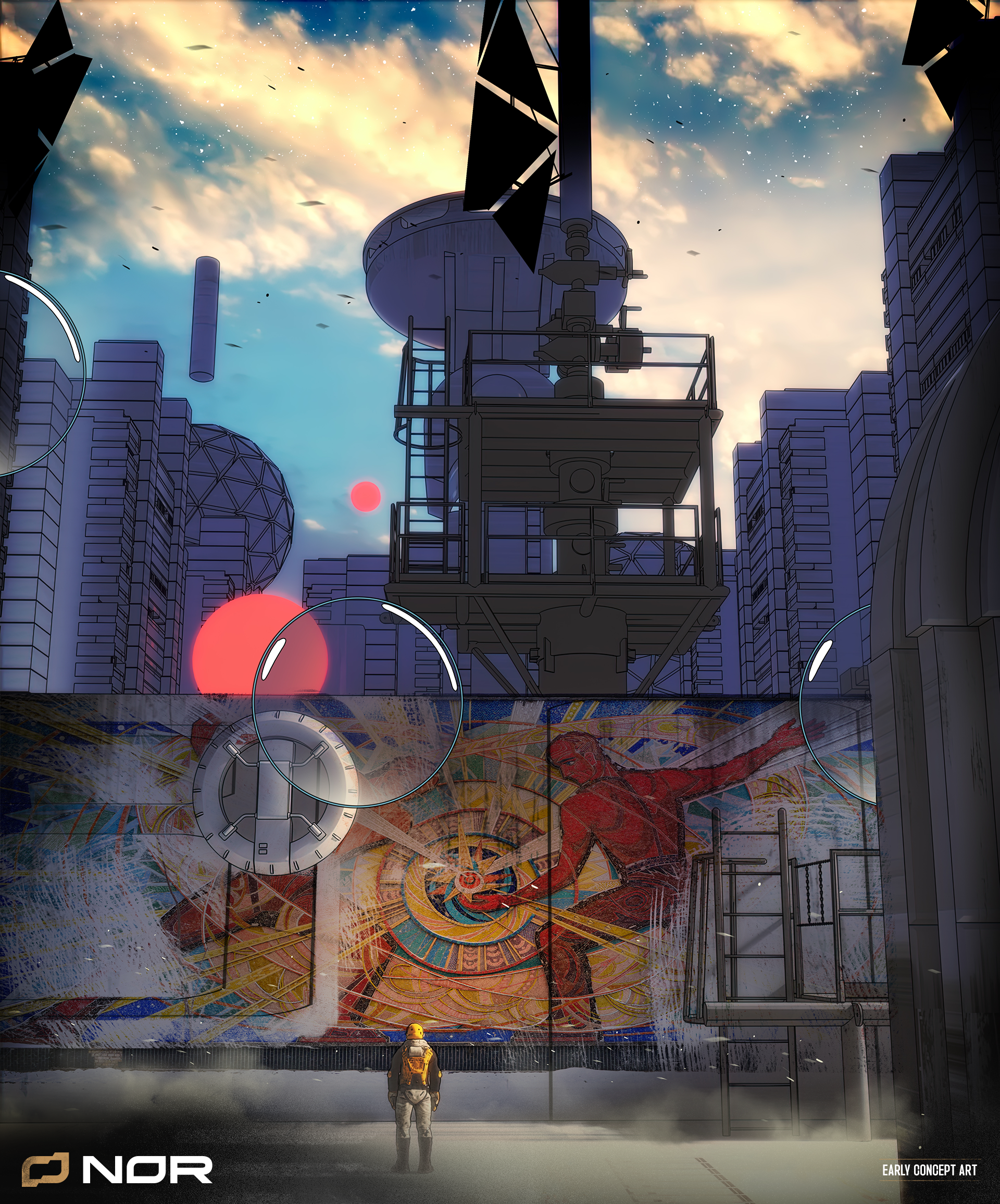
Eventually the Arena became sentient. Khoric scholars don’t know if this was the intent of the 9, but the Arena’s proximity to The Coalescent created a “pairing” of the two structures, and now the Arena changes its landscape according to The Coalescent’s desires. One theory claims that the 9 themselves are responsible for any modern changes in the Arena, specifically the Warrior, who watches every contest and alters the landscape to ensure fair play.
Other theories concerning the Arena are speculative, at best: that the Arena drinks the blood of any Khoric wounded within its walls; that the Politician manipulates the space to gain insight into all players; that the Inventor created the energy-sphere for unknown (but nefarious) reasons.
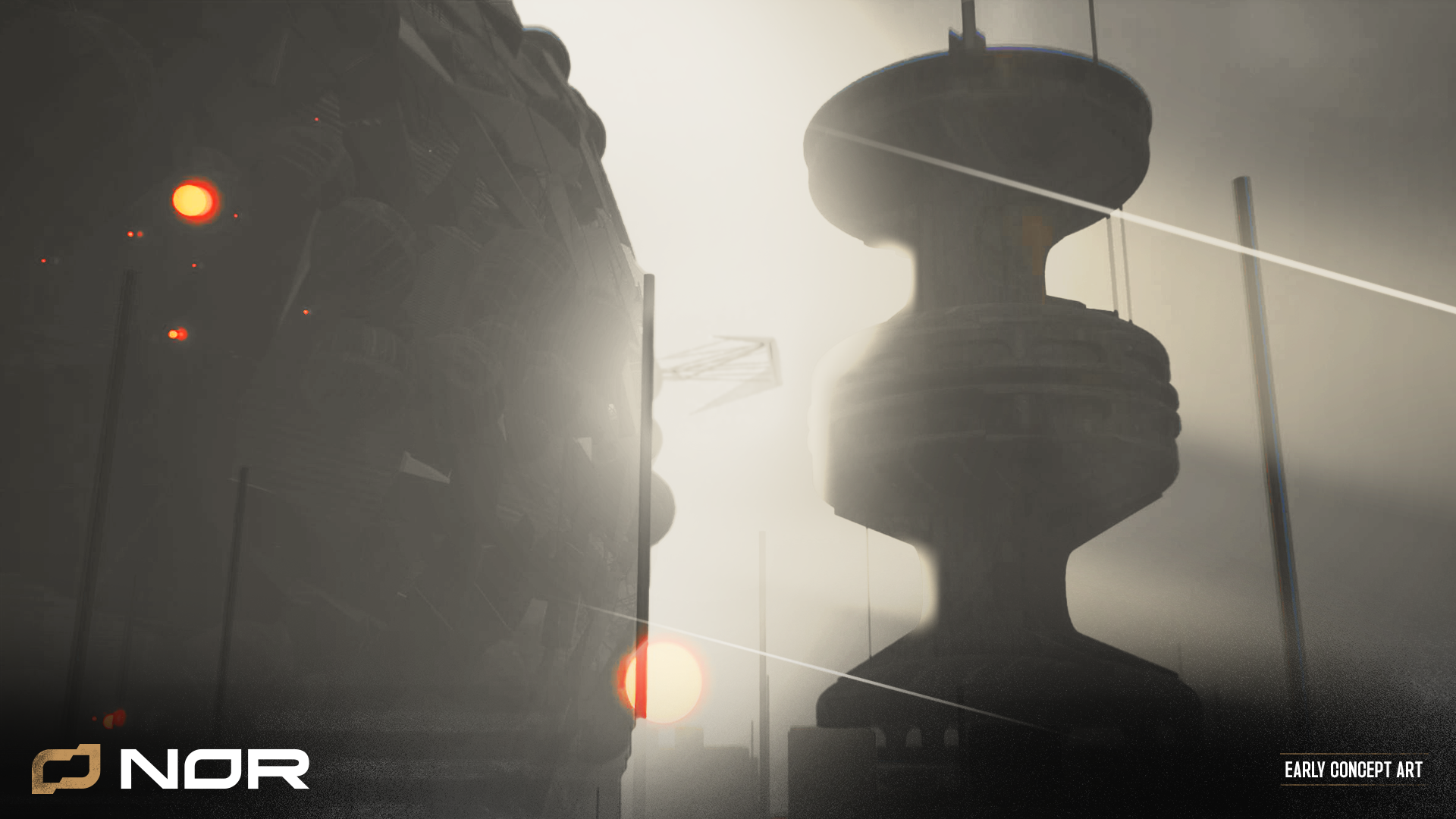
“I began not so much as a tourist in the city of Khora but as a cosmic stowaway: no less Khoric in appearance than many of its citizens but ignorant of their customs. My first visit to Khora saw me wandering in stupefied awe at the sky-piercing towers and glaciers of metal and glass whose shadows covered countless streets. I visited taverns and laboratories, stadiums for sport, theaters of government; I saw legions of automatons, swarms of mechanical devices constantly at work. Construction of a building that would take years in our world took mere minutes in Khora, and then, just as quickly, these swarms would deconstruct whatever they had built, leaving a space soon filled with vines of alarming vitality.
“Above it all stood the Arena Perilous, a structure of such size that it took me weeks to circumnavigate. During my journey I spoke with men, women, and persons of uncertain genders and creeds who bore no accents and yet somehow knew English, French, Spanish, Urdu, Swahili—all the languages I am proficient in. Of my world they seemed to know everything, of their world I knew nothing. I cannot say any of them were happy, nor were they content. Nor did they display passions as you and I understand them. But sorrow and anger were equally absent, replaced with a sort of stoic, abiding innocence.”
– Codex Eternicus, “The Traveler Arrives”
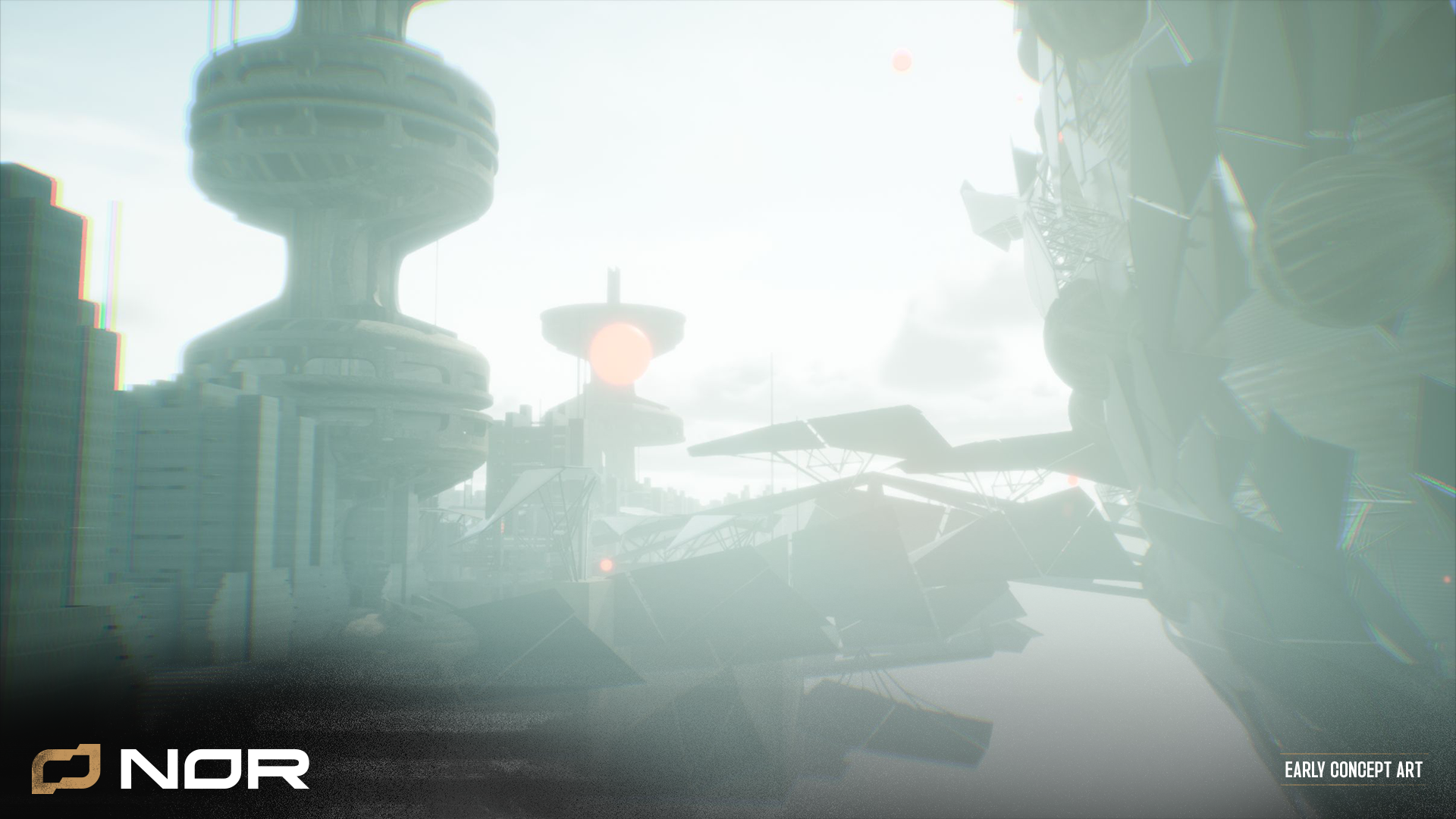
Q & A with our Game Director
Hello Folks! It’s the C9 team with another post, this time featuring our very own Game Director Paul Lee. Paul has worked on a bunch of impressive titles (Across the Spiderverse; Dr. Strange 2; Red Dead Redemption; God of War; et al.) and he’s brought his decades of experience to our humble organization.
We had questions, he had answers. Here are some:
Why did you get into the videogame industry?
I’ve had a clear vision, early on in my career. There wasn’t anything that I wanted to do aside from game development. Around my senior year in my art school, I wanted to make video games. I was obsessed with playing video games at the time and I wanted to make a career out of it. 22+ years later, the passion never faded.
What advice do you have for aspiring game producers? What is an underrated skill? What is an overrated skill?
People that yearn to break into the game industry quickly find themselves disappointed. Whether it’s company politics, or the type of work they’re tasked with, very rarely are things logical or rational. If you can develop the mental strength to withstand the weird and the unexpected, and brace yourself for some anguish, you’ll survive.
Almost everyone in the industry overlooks the art of technical troubleshooting. This is probably the most valuable skill that you can have. Game development roughly consists of 40% asset creation and 60% troubleshooting/fixing things. If you can minimize your frustration and hone your troubleshooting skills, you’ll have a one-up against everyone else.
Polishing is the most overrated skill. There are numerous artists and engineers who can polish game art and gameplay-relevant assets and mechanics, but the most crucial steps in game development is to put conceptual elements into motion and succeed. When doing so, one does not have to polish the items in question. For example, if we were to create a five-step fighting combo move for a character, we wouldn’t need refined animations at the start. We could first create animation assets that are at ‘rough’ stages and have them be incorporated into the game engine to obtain the general sense of the ‘feel’ and the timing.
You’ve worked on a lot of famous titles, with much bigger budgets. How does your experience making FASTER compare to your previous titles? Is there anything that’s surprised you?
There isn’t much of a comparison. Some of the AAA titles have a near-unlimited budget with a very generous time frame. FASTER did not have the luxury of hiring a dream-team consisting of all supervisor-level creatives, nor did we have abundant monetary resources that allowed for multiple time extensions. Many members of our team really had to step up their game (pardon the pun) to get FASTER finished.
How do you solve creative blocks?
All creative blocks are temporary. There are more than enough resources out there to solve any kind of problem–you just have to push through it.
What is the most important thing you have learned from building FASTER with this team?
Having the right talent is paramount. It’s an absolute prerequisite in creating a great game.
Having a team with a solid threshold for stress and willingness to troubleshoot, problem solve, and push through the rough trenches is what got us to the finish line. (No pun intended. I think. – ed.)
TECHNOLOGY UPDATE
As we come close to our launch, we sit down with our CTO Mo Khalifa to get an understanding of what the NOR platform provides that no other gaming platform does.
“We have created an industry-first platform that gives the power back to the user by harnessing decentralised technology. The user data and in-game items are truly owned by the player, not stored on a server owned by the company. The platform works seamlessly as any other platform and we don’t have any extra plugins for the user to add, no wallets, etc. We have also built an in-game economy that hasn’t been seen before. We don’t use tradable coins on the open market. We keep it fair and square for the player.” – Mo Khalifa
WHAT'S NEW?
“The latest feature we have is our matchmaking system which doesn’t require the user to wait in a game lobby until other players join. It’s all done seamlessly and quickly to give the player a better experience. This was made possible by a long period of detailed research and development to find a solution that will work and make this dream a reality.
NOR is collaborating with Holochain and Rain to create a web3 and dweb game economy and ecosystem. We are building a decentralized platform with a series of games that keeps player data transparent, and is scalable across web, mobile, and desktop, with aligned incentives for players and metagamers.
The NOR platform is the decentralized gaming and metagaming access point. Login looks like web2 but actually connects to your local keys– meaning all participants are fully in control of their data. This identity connects to various gaming systems and stores player data on a distributed network.”
TOURNAMENTS
“The NOR tournament system sells tickets and offers player entries, rewarding both metagamers and players upon tournament completion. This utilizes web3 and dweb technologies for a transparent, low-friction system. NOR, Holochain, and Rain are working together to extend this world of competitive gaming/esports. Platform, ID, tickets, tournaments, game stadia, rewards, contracting and more are in the works for 2024. Additional functionality like asset crafting, player souls, extensible onchain asset economy, onchain game energy and currencies are in the works. Stay tuned.”
-MO KHALIFA, CTO
Reintroducing Khora
Back when we started this whole thing, our entire game world was built around the city of Khora. Micah and his writing team came up with a bunch of other names–The Immortal City, City Prime, the Beginning of all Beginnings, the End of All Endings, etc–but I’ve always called it Khora. There’s plenty of lore posted in our Discord channel (if you haven’t joined, please do) about the life of Khorics, detailing their immortal existences and how they keep themselves sane through the unending eons.
I envisioned Khorics as near-humans cursed with immortality. They can die in a physical sense (and they often do) but they always return to Khora, reborn through the Coalescent. Immortality is their prison. It drives them insane, even as they attempt to lose themselves in unchecked hedonism.
Play Keeps Khorics Sane
Of course hedonism has many forms, and Khorics tried it all before settling on play. Play offers a distraction from immortality because play can be structured to mirror what Khorics miss most of all: the ability to permanently die. Play offers a discrete beginning, middle, and end.
Play used to be what made videogames so much fun. Death used to matter in videogames but when games became what they are now, death didn’t matter. Endless lives, endless save points, endless grinding–we players became immortal. And immortality became our curse, just like the Khorics.
So play is the only thing that keeps Khorics sane and they build their existence around it. The city of Khora is their playground. We hope it becomes yours.
Enter the Arena Perilous
Pompeii had the Amphitheater, Rome had the Coliseum, London has the O2, Ahmedabad has the Motera Stadium, and Khora has the Arena Perilous.
Every important game is held in the Arena Perilous, including our first game FASTER. The Arena is a mutable space capable of housing any type of game at any scale, from a single field to a self-contained sea to a vast urban landscape spanning hundreds of square miles. FASTER uses a track that weaves through the city of Khora. The Arena Perilous in this instance has knit itself to the Khorics streets, proof of its limitless forms.
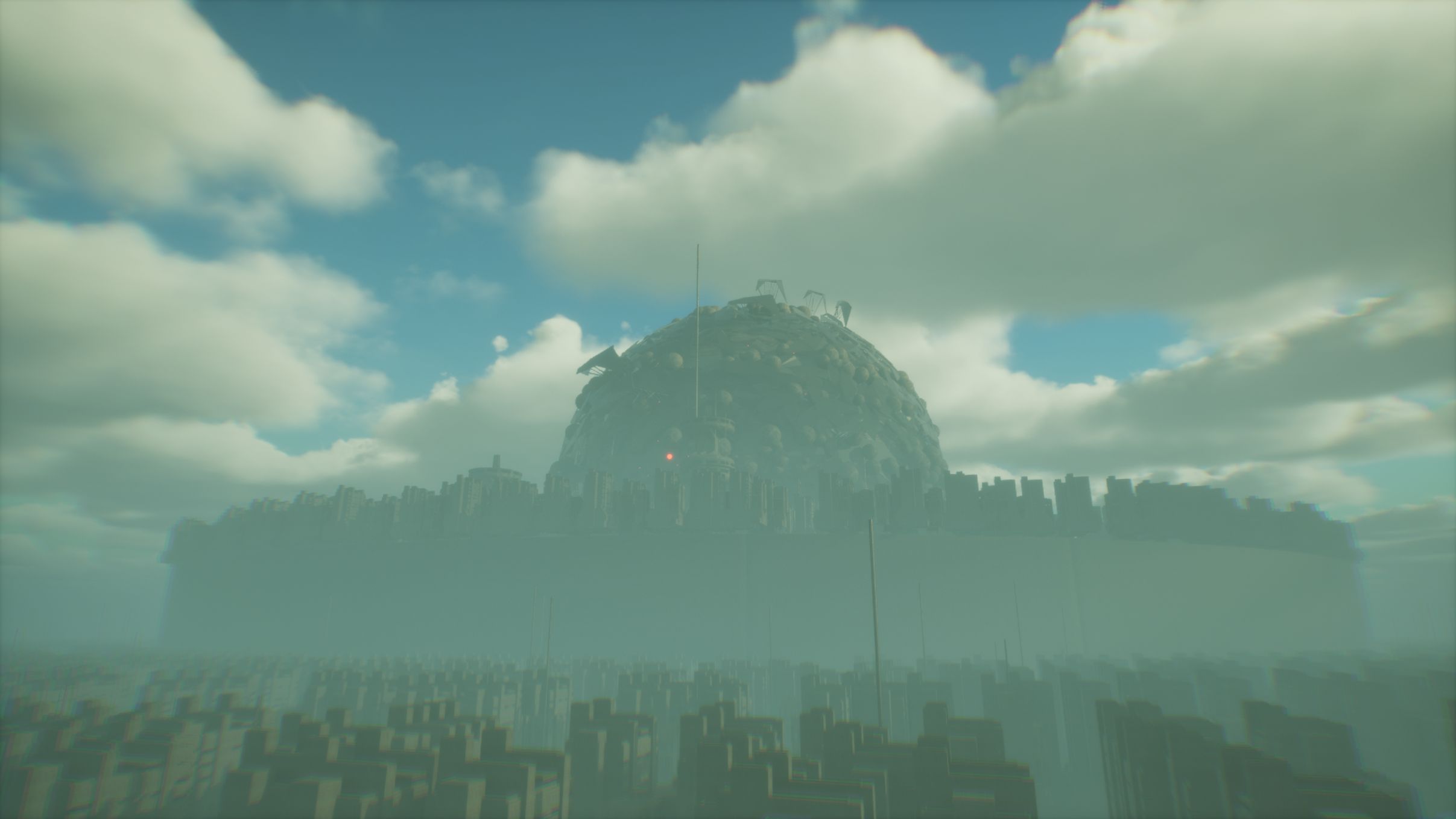
Brooks Brown
CEO, Consortium9
What Does it Mean to Jump?
That may sound like a silly question, but it’s an important one if you want to tackle the complexity required for skill-based gaming with emergent play. Before we can create a world full of incredible, unpredictable moments of fun, we must take our first step – or leap. Many of them, in fact, as it turns out there’s a lot of things ‘jump’ can mean in a game, and each one forms the foundation of a completely different player experience.
What Jumping Used to Mean
One of the most common ways of simulating a jump is to put a force on the bottom of the character when a button is pressed. Couple this ‘impulse’ with some gravity, and it sure seems like jumping. Only it’s not. Jumping doesn’t only mean movement up and down. Nobody jumps from a standing position because a magical force suddenly lifts them skyward. So that’s not jumping yet, not really.
We could do the version where we define the distance a player can jump. Then we build animations that support that pre-packaged jump. A leg moving a certain way, arms flailing…thanks to Unreal, we can make these animations blend super well. You might even think it’s a jump. But it isn’t really. It’s the same canned response to a button press, now covered up by talented animators. Ultimately, what you can actually DO in the space has been reduced to a single motion. It feels systemic, but the jump is always the same jump. That’s still not really jumping, is it? More importantly, it still doesn’t allow for emergent gameplay, which is key to providing a thrilling, rewarding, and uniquely human experience.
None of This Works
A game with a high skill ceiling requires layers of systems interacting so people can’t quite predict what’s going to happen, forcing them to deal with a truly unscripted event. This is more like how the real world works: jumping may be something we take for granted, but anyone who’s tried to hop a turnstile knows it entails a whole sequence of intentioned movements. Every muscle in your leg engages in perfect order and in different ways, ankle, hip, and knee joints hinge or rotate appropriately, all while tubes in your head transmit readings to help you balance. So how closely can we really model a jump, and how does striving to do so enrich gameplay?
The real people who are best at jumping aren’t consciously operating all these mechanics. Instead, through practice, they’ve developed a trust in their body that makes what they do seem effortless. Someone who’s jumping a hurdle in parkour will put their hands out to brace themselves lightly, but they don’t catch themselves or think too much about what they’re doing. They just move through a flow of cues that trigger other cues, managing the whole thing based on physical feedback. That’s a pretty complicated way to think about jumping, but it’s also true to life – and more fun. That’s the feeling we want to convey, so that’s how complicated a system we need to begin with.
What does it mean to jump? Let’s try to get a fix on things by measuring them. How high do you think someone who’s good at jumping is able to jump? How far? How does that vary based on getting a running start or nailing the jump angle or push-off? We know folks who can get themselves up well over a yard in the air, so maybe that’s a good baseline. Of course, there are people with shorter legs, longer legs, different joint placements, a tendency to favor one foot or the other. In every case, we know they have to push themselves forward at some point in the jump, so let’s simulate that by having the player press W to go forward. That’s all, just W, and their legs and feet work automatically like in the real world. They don’t push different buttons to move different feet unless they’re playing QWOP, a game that actually proves the point of this blog post – virtual jumping is more complicated than we think.
To further develop our simulation, let’s add a Spacebar press that makes the character push down off the ground, causing it to push back up on them and propel them into the air. Of course we’ll also need some gravity, so they reach a sensible height and fall back to earth. To make jumping skill-based, we also need to simulate that biofeedback we get from all of our senses when performing any kind of move in the real world. We mimic that input by providing the user with information via UI elements, color coding, sound design and effects, glowy-shit, everything. Now they know if each jump did what they wanted it to and can practice at becoming a better jumper. Now the system is complex enough to even allow for better jumpers and worse jumpers. Now we have a game.
But jumping in a game can’t be entirely the same as jumping in real life. For example, in real life, as you near an edge you plan to jump from, most people instinctively look down real quick to make sure of the placement of their last step, the push-off. In our games, you won’t do that. We tried it, you won’t enjoy it. It’s not fun. Looking down at your character’s foot briefly before a leap – even gamifying where that foot lands and whether you nail the ledge – not that fun. Then “what does it mean to jump?” also implies a host of artistic decisions. The way you move in a game is, or should be, a bunch of very conscious choices made by the development team. It’s kinda hard to rebuild gaming from scratch, tbh.
Speaking of that moment at the ledge, did you know lots of games gloss over it by making you Wile E. Coyote? Just like that poor hapless bastard, your character model is able to run just a bit past the edge of a cliff and still trigger a jump if they need to. It works to push our brains past that moment of unreality, but it remains, in some sense, unsatisfying and incomplete. We still haven’t fully answered the question: what does it mean to jump?
When you’re about to jump, your body compacts and you become a slightly smaller version of yourself; no one leaps with their legs straight. This primes your joints and muscles to expand again, so you can aim all that energy groundward in a burst and blast off, briefly defying gravity and spitting in the very eye of God. To simulate this aspect of jumping, how about instead of pressing Spacebar you hold it for a semi-arbitrary length of time, and that represents how much oomph you’re putting into each one? Now you can perform a small skip, a light jump, or a huge leap, and build games that require that level of precision and attention to succeed. Mechanics like this invite us into the game, into a moment of focus – into a state of flow.
By taking nothing for granted and rebuilding what it means to jump, to run, to attack, to play, we can use the latest tools to honor the richness and complexity of actual physics, and therefore expand the range of skill growth and satisfaction available to a player. Easy to learn, hard to master, fun to play – that’s what we want Consortium9 games to be. So next time you’re gaming, next time you hit that Spacebar, ask yourself: does this jump mean enough? Could it mean more?
What does it mean to jump? It means going for it. It means energetically moving forward with the trust that you’ll be able to stick the landing. A jump, once undertaken, is something you can’t take back until it’s completed (or unless you’re Prince of Persia circa 2003).
For us, NOR is a big jump. We hope you’ll make it with us.
Brooks Brown
CEO, Consortium9
The PlayFi Manifesto
The videogame
industry is broken.
Players are acutely aware of how they are being exploited by developers, developers are frustrated as their games are perverted to serve lootboxes, and financiers are frustrated because Candy Crush makes them oodles more money than a retro platform – and they don’t get why they can’t just monetize the platformer as much.
The vitriol is aimed at all of them, but the truth is it is neither developer, nor player, nor financier who is to blame. It’s the things between them. The way things are done. And it’s time we destroyed the way things are, and build it. Anew.
It is time we talk about what Play really is.
ONE.
PLAY COMES FIRST
Before you can lead a soccer team to a league championship, you have to kick the ball. Play exists before anything else.
This means games start not with a world, but with a tilt of the controller. With each tilt and button press, an order emerges. This order is an understanding of the rules, the functions, and all the possibilities they bring.
TWO.
PLAY IS NOW
Play does not concern itself with the future or past. It is the movement of your body, the pounding of your heart, the words that you’re thinking as you read this sentence.
As the game grows, it is the responsibility of the developer to ensure only the now enters. It is their job to protect Play.
THREE.
PLAY IS NEW
Pete Gogolak played. Dendi Played. The Eagles played. These moments happened because of the extraordinary agency afforded the players within a very tightly controlled space. This space allows experimentation. It allows boundaries to be broken. It is the new.
Developers have a responsibility to maintain these spaces to enable the new, not crush the new.
FOUR.
PLAY IS FREE
If you monetize play, you break it. If you say otherwise, you’re wrong. FIFA doesn’t monetize vanity items for players, charge them for special bonuses, and it doesn’t slow them down if they are poor.
Being as ethical as FIFA is a very low goddamn bar.
Within NOR, Play is never monetized. Play will always be free.
FIVE.
PLAY IS NAIVE
Three Card Monty works because the players are given the experience of feeling like they are good at the game. The space the game holds is a fragile illusion, one any hustler knows players are scared to shatter.
Modern Game Development is no different.
Players all get to enjoy being empowered. Until the game turns on you, pushes you into paying to continue that enjoyment, and the scam is complete.
SIX.
PLAY IS ALIVE
Within the space of the game, Play is a living, breathing force. Eventually all games end, and this ending concludes play, setting it in stone.
Concretized endings make space for the new. This closure enables the play – now past – to become something else. They become part of the emergent Metagame.
SEVEN.
META COMES SECOND
Among the sea of concluded games, another type of player emerges. Looking over all the games, they see patterns. They recognize efficiencies. The Past and Future come together in a new game, one beyond the games.
Metagames are the result. Simply Metas for DOTA2 all the way to Fantasy Football, Sports Teams, Agents, and Sponsorships are Metagames. These are not accidents.
EIGHT.
METAGAMES ARE PLAY WITH GAMES
One Player throws his credit card at a game, and others players do not understand. “You aren’t actually increasing their skill!” they say, as the words fall on deaf ears.
This player doesn’t hear them because they aren’t playing the same game. These players are not playing with the Now, they are playing with the Meta of the game: purchases, markets, efficiencies. These players are Metagamers.
NINE.
META IS PAID
Play is free, and this applies even here – where the Metagamer is spending capital. In the Metagame the money itself is the mechanic of play, an analogue to the controller, the button press, and skilled reactions.
Like the first Magic Circle, if allowed to bleed into another, players are tricked into spending money – and Metagamers are tricked into feeling they’ve bought skill. They haven’t. 3 card Monty strikes again.
TEN.
THE WHOLE & ITS PARTS
Metagames are emergent from Games. Games are conditioned by their Metas. Players and Metagamers rely on each other. Their only relationship is their difference.
We let that fool us into thinking they were the same thing, which removed not only their agency, but put them in conflict as each fought to be the audience that game makers would care about.
Play does not need to compromise. Metagamers and Players can have their space, play their games, and thrive alongside each other.
We believe it is time to give the same freedom to all who Play. For Play and Finance to work hand in hand, not for one to dominate the other.
THIS IS PLAYFI.
THIS IS NOR.
And if you agree with us, we want you on this journey. Join us as we bring back Play.
Introducing The Aspects
When making NOR, our goal has been to lay bare the things implicit to the digital world that we all once upon a time were bothered by and now seem to take for granted. Somehow the nature of time, and the way habits are developed, has melted our objections away and left us with many negative elements in the space so baked into our lives we can’t even imagine a world without them. The obvious are easy – microtransactions we all hate, pay-to-win schemes frustrate by nature and prey on “whales.” Going deeper, however, we find more.
Today, we want to talk with you about death. At least, the lack of it.
Ever since the days of the coin-op arcade we have been sold lives. Your inevitable in-game death would come and these lives would run out. So we needed to buy more. The rules around how you bought and used lives were manufactured, unnecessary. It had to be designed this way, apparently. How else will you charge people money?
We have since moved away from pumping quarters into machines, but the idea of life and death in this form never really changed. Today, many games still use this to drive revenue, couching it in ‘attempts’ or ‘energy’ instead of lives. The rest have stopped charging for it, but they still pretend death is a painful, awful loss, to be avoided as you proceed through the game, the outcome of which has now become inevitable.
NOR sets out to make this plain, and make death matter again. All who join our ecosystem will be granted an Aspect on entry, a proof of your immortality that sits as a digital twin in the platform. While Play is something that’s shared equally with everyone, for our economy your place in the hierarchy extends first from the center of power. To best explain this, we want to introduce Aseela and the Aspects of the Nine.
THE ONE
At the center of everything within our world is the Coalescent, the source of all immortality and focal point from which the City is built. The Coalescent, also called Aseela, is a god-like being and the locus of power for all of Khora.
THE NINE
The Nine Progenitors are eternal beings irretrievably linked with The Coalescent and from which all living Khorics ultimately descend. They are each a luminary in their field, their identities never to be sold or traded. They are controlled by NOR’s storytellers, and will be used at their discretion to keep the narrative of NOR and Khora interesting. We will be revealing each in detail as they are minted in the coming days.
THE 81
Each of the Nine serve as models for the first generation of immortal Khorics to emerge from The Coalescent. These 81 have first access to purchases, activities, and any element of NOR’s economy. Their individual Aspect is also a mixture of two of The Nine, and will yield other unexpected properties revealed as the platform grows. No two will be alike, and already they are mostly allocated to early supporters who understand the vision and are excited to make their mark.
THE 729
The next echelon of distance away from The Coalescent are The 729, a tier reserved for our Discord Illuminaries and everyone on our whitelist, which opens on March 31st. They will wield enormous influence over the economy and issues that affect all of Khora.
THE 6561
This minting will begin following the 729, with the whitelist coming shortly before. Though their distance from The Coalescent is greater, they will still have full access to NOR’s economy, enjoying privileges not afforded the 59,049.
THE 59,049
These will be minted in six batches. Even the most distanced of those who possess an Aspect have full access to NOR’s economy and are welcome to participate. Immortality is for all Khorics, but this is where the privilege of economy ends.
THE REST
As the platform grows, The Coalescent will gain the power to issue more Aspects to larger groups. However, anyone who doesn’t have one of these Aspects will be relegated to playing in the economy in only the most minor ways possible. The groups above are the Inner Circle of Khora.
This ensures those who take part are not only actively engaged in the success of the platform, but understand how special they are to us and the entire play base. You control FATE like no other players do. You have special privileges, and will be recognized on sight in multiple games or even in the stands. You are the elite.
DEATH
These NFTs are immortal. Their Aspect carries on and follows with them. Trade it away and all it can do goes with it. Death is different here, and for those who carry an Aspect the “game around the game” is always open for play. Championships, tournaments, and our Final Rounds—the places where death is absolutely permanent—this is where players play on a level playing field. Ultimately, those who risk permanent death do so for a chance to become a powerful member of the Inner Circle. Those already there have no need.
More of NOR will reveal itself in the coming days.
